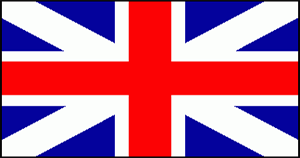War of 1812 Battles |
Colonial Wars |
American Wars |
Battle of Buffalo
(aka Battle of Black Rock)
December 30, 1813, Buffalo, New York
 |
|||||||||||||||||||||
|
As soon as Fort Niagara had been captured, the British under the command of Maj. Gen. Phineas Riall, marched down the American side of the Niagara River. They were till seeking revenge for the burning of Newark.
Riall had 500 regulars and 500 Indian warriors with him. They marched through Lewiston, Manchester, and Youngstown burning every farm building for several miles inland from the river.
Meanwhile, a company of British troops approached Fort Schlosser, a little ways before the fort. They captured a blockhouse and took 8 Americans prisoner. The Niagara Frontier on the U.S. side of the Niagara River was now in flames.
There was almost no resistance, although the Canadian Volunteers destroyed the bridge over the Tonawanda Creek, but Wilcox and his men could at best only delay the inevitable.
The Americans were surprised again on December 30 when Riall came back. His objective was to capture any supplies that could be moved and destroy the rest, including any American ships wintering in Buffalo or Black Rock, and any other buildings that might shelter the American army were to be burned.
Lt. Gen. Sir Gordon Drummond was a man of action and a strict disciplinarian. He wished to avoid the ransacking of American property that had been the trademark of the American occupation on the Niagara peninsula. His orders for the raid on Buffalo and Black Rock were that any men caught looting would be put to death as punishment.
The British forces crossed the captured bridge over the Scajaquada Creek. The cannons were booming at Black Rock. The American Gen. Amos Hall had 1,200 men with him. They put up a fight for awhile, but the militia gave way and retreated through Buffalo.
Riall burned both towns of Black Rock and Buffalo and all the buildings that he had missed on his first raid.
One serious loss to the Americans was the destruction of 3 of Commodore Oliver H. Perry's small schooners, which were at Black Rock for the winter.
The British departed and left a garrison at Fort Niagara. The Buffalo citizens slowly returned to their village. The British had burned the frontier from Buffalo through Black Rock to Eighteen Mile Creek. They destroyed 333 buildings in all, and in Buffalo, only 3 were left standing.
Sir George Prevost followed this action with a proclamation that stated his regrets that the British troops had been forced to take measures "so little congenial to the British charactor". He ended the statement with the suggestion that the Americans had better behave themselves in the future.
The fires of Buffalo finally died down, but the scorched earth policy was not be the end. Both American and British armies alike had the same thought, "Fire breeds fire and revenge breeds revenge".
Before the war would end, more homes and buildings would be burned on both sides of the border, from the smallest cottage to the America's capitol, the White House in Washington, D.C.
